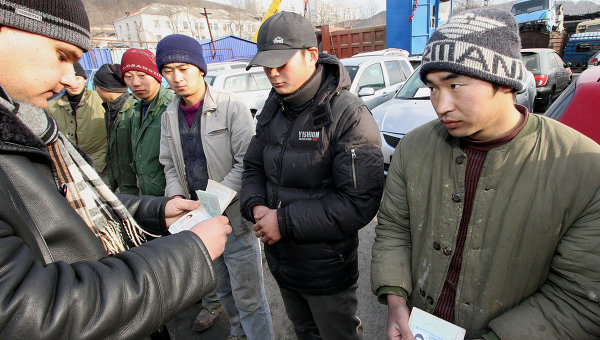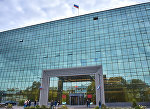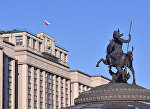MOSCOW, July 22 (RIA Novosti) – One in three Russians thinks migration is the most serious threat to national security, and is more dangerous than terrorism and environmental disasters, according to a poll published Monday.
Migration was cited as a “very real” threat by 35 percent of Russians polled by state-run VTsIOM, while almost every fourth Russian thinks low birth rates are similarly dangerous for their nation’s future.
Migration is seen as far less dangerous than eight years ago, however, when 58 percent of Russians cited it as the largest threat to the nation, the pollster said. “This is not a majority of the population, this is only one in three Russians,” VTsIOM’s Olga Kamenchuk told RIA Novosti.
Russia’s population has become increasingly diverse in the last decade, due to a combination of a fall in the ethnic Russian population and an influx of migrants, attracted by almost a decade of strong economic growth fueled by high oil prices. Most migrants come from the impoverished and overpopulated republics of ex-Soviet Central Asia.
More than 11 million foreigners were living in Russia in June, migration authorities said.
The influx of migrants has triggered ethnic tensions, xenophobia and hate crimes, with some Russians accusing migrants of stealing jobs, causing a drop in wages, forming ethnic gangs and failing to respect Russian traditions. Human rights groups and migrant community leaders say Russian employers, officials and police routinely abuse labor migrants by delaying or withholding their pay, extorting bribes and subjecting them to violence and abuse.
Other top national security threats cited by the poll were “degradation of culture, science and education” (33 percent of those polled), environmental disasters or terrorist attacks (28 percent each) and exhaustion of oil and gas reserves (25 percent), the poll said.
Some 23 percent of those polled said the “extinction” of the Russian population due to low birth rates is a security threat. The government itself has said reversing the fall in population is a national priority, and has introduced financial incentives for women to have more children.
After the 1991 collapse of the Soviet Union, Russia’s population has shrunk by almost 7 million and now stands at 143 million, the government said. Although last year’s fertility rate rose to 1.7 children per woman, it is still below the 2.1 rate needed for the population to remain stable, according to Health Ministry statistics.
The VTsIOM poll was held in mid-June and covered 1,600 respondents throughout Russia. It had a margin of error of 3.4 percentage points.



